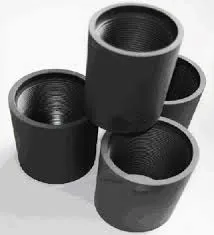- Afrikaans
- Albanian
- Amharic
- Arabic
- Armenian
- Azerbaijani
- Basque
- Belarusian
- Bengali
- Bosnian
- Bulgarian
- Catalan
- Cebuano
- Corsican
- Croatian
- Czech
- Danish
- Dutch
- English
- Esperanto
- Estonian
- Finnish
- French
- Frisian
- Galician
- Georgian
- German
- Greek
- Gujarati
- Haitian Creole
- hausa
- hawaiian
- Hebrew
- Hindi
- Miao
- Hungarian
- Icelandic
- igbo
- Indonesian
- irish
- Italian
- Japanese
- Javanese
- Kannada
- kazakh
- Khmer
- Rwandese
- Korean
- Kurdish
- Kyrgyz
- Lao
- Latin
- Latvian
- Lithuanian
- Luxembourgish
- Macedonian
- Malgashi
- Malay
- Malayalam
- Maltese
- Maori
- Marathi
- Mongolian
- Myanmar
- Nepali
- Norwegian
- Norwegian
- Occitan
- Pashto
- Persian
- Polish
- Portuguese
- Punjabi
- Romanian
- Russian
- Samoan
- Scottish Gaelic
- Serbian
- Sesotho
- Shona
- Sindhi
- Sinhala
- Slovak
- Slovenian
- Somali
- Spanish
- Sundanese
- Swahili
- Swedish
- Tagalog
- Tajik
- Tamil
- Tatar
- Telugu
- Thai
- Turkish
- Turkmen
- Ukrainian
- Urdu
- Uighur
- Uzbek
- Vietnamese
- Welsh
- Bantu
- Yiddish
- Yoruba
- Zulu
Casing Coupling Dimensions - Comprehensive Guide
Understanding Casing Coupling Dimensions A Comprehensive Overview
Casing couplings are essential components in the oil and gas industry, serving as connectors that join sections of casing pipe to form a continuous string. The correct selection of casing coupling dimensions is crucial for ensuring the integrity and reliability of well construction, contributing to the overall safety and efficiency of drilling operations. This article provides an overview of casing coupling dimensions, their significance, and the various factors that influence their design.
Definition and Types of Casing Couplings
Casing couplings are made of steel and are designed to connect two casing pipes. There are several types of couplings, including regular couplings, long couplings, and special couplings. Regular couplings provide a standard connection, while long couplings can add extra length to the casing string. Special couplings may incorporate unique features tailored for specific applications, including those designed to withstand high pressures or corrosive environments.
Key Dimensions of Casing Couplings
The dimensions of casing couplings are specified by various standards, such as the American Petroleum Institute (API) specifications. Key dimensions include
1. Outer Diameter (OD) This measurement is critical, as it determines the coupling's compatibility with the casing pipes. Standard sizes typically range from 4.5 to 20 inches, but variations exist depending on the application.
2. Length Couplings can vary in length, affecting their effectiveness in providing a secure connection. Longer couplings may be used in deeper wells to enhance stability and reduce stress concentrations at the connection points.
3. Wall Thickness The wall thickness of the coupling must be sufficient to withstand the internal pressures during drilling operations. Thicker walls offer better resistance to deformation and failure, particularly in high-pressure environments.
casing coupling dimensions

4. Thread Design The type of thread used in casing couplings greatly influences their performance. Common thread types include buttress, premium, and API threads. The thread design affects how the casing is connected and sealed, with premium threads often providing enhanced sealing capabilities.
Factors Influencing Casing Coupling Dimensions
When selecting casing coupling dimensions, several factors need to be considered
1. Well Depth and Pressure Deeper wells typically require couplings with higher strength and durability. The expected pressures at various depths influence the selection of both the casing and the couplings.
2. Formation Conditions The geological conditions of the drilling site can impact the choice of coupling dimensions. Areas with aggressive environmental conditions, such as corrosive fluids or high temperatures, may necessitate specialized couplings.
3. Fluid Types The type of fluids being handled within the casing string (e.g., oil, gas, water) can also dictate the dimensions and materials selected, influencing the risk of corrosion and pressure variations.
Conclusion
Casing coupling dimensions play a pivotal role in the success of drilling operations. Understanding the various dimensions and the factors influencing their selection is essential for oil and gas professionals. By ensuring that the correct casing couplings are used, companies can improve the reliability of their wells, ultimately enhancing operational efficiency and safety in the challenging environments of the oil and gas sector. As technology continues to evolve, we can expect innovations in casing coupling designs that may further enhance their performance and applicability in future drilling projects.
-
Tubing coupling plays a significant role in the chemical industryNewsApr.03,2025
-
The Importance of Tubing Crossover in Various Industrial FieldsNewsApr.03,2025
-
The characteristics and important role of Tubing Pup JointNewsApr.03,2025
-
Characteristics and functions of Pup jointNewsApr.03,2025
-
Characteristics and Functions of Pup Joint PipeNewsApr.03,2025
-
Application of Coupling Casing in Various ScenariosNewsApr.03,2025







